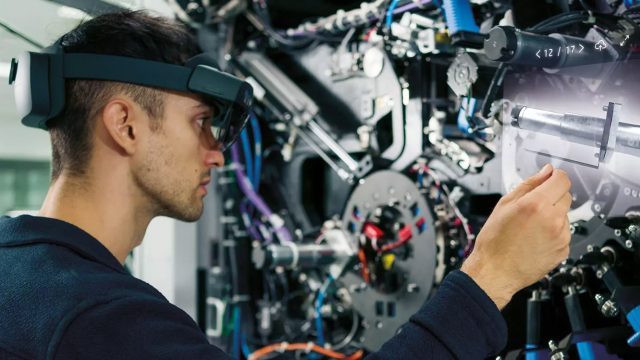HP this week announced its ‘xRServices’ program which equips customers of its industrial printers with a HoloLens 2 headset, allowing the company to provide immersive remote support for repairs, training, and more.
While many AR companies are focused on building AR products, HP is making an interesting move in using the technology as an add-on to improve an existing line of its business. The company’s newly announced xRServices program promises to deliver remote AR support for its industrial printer customers.
The program employs Microsoft’s HoloLens 2 headset, which HP’s customers can use to access AR training and live guided instructions to fix issues that arrive with complex, commercial scale printers.
HP is pitching the solution as a way to allow even untrained individuals to fix issues with the help of a specialist on the other end who can guide them step-by-step through troubleshooting and repairs with AR instruction. Further the company says the service can be used to provide AR training for various workflows and issues that may arise with the company’s industrial printers.
HP hasn’t clearly detailed exactly what software it’s running on HoloLens to facilitate xRServices, but it seems likely that it is leveraging Microsoft’s Dynamics 365 Remote Assist platform which includes many of the AR functions that HP showcased in its xRServices concept video—like augmented annotation, document visualization, and video chatting through the headset.

HP says the xRServices program is in beta and being trailed by a handful of companies today, ostensibly with plans to scale up the program in the near future if all goes well.
The move is a glimpse of what is likely to be the future of many types of technical support interactions. While this kind of technology is starting to be deployed in enterprise settings, as AR becomes more prevalent in the devices around us we can expect to find this kind of remote support in our homes one day too.






